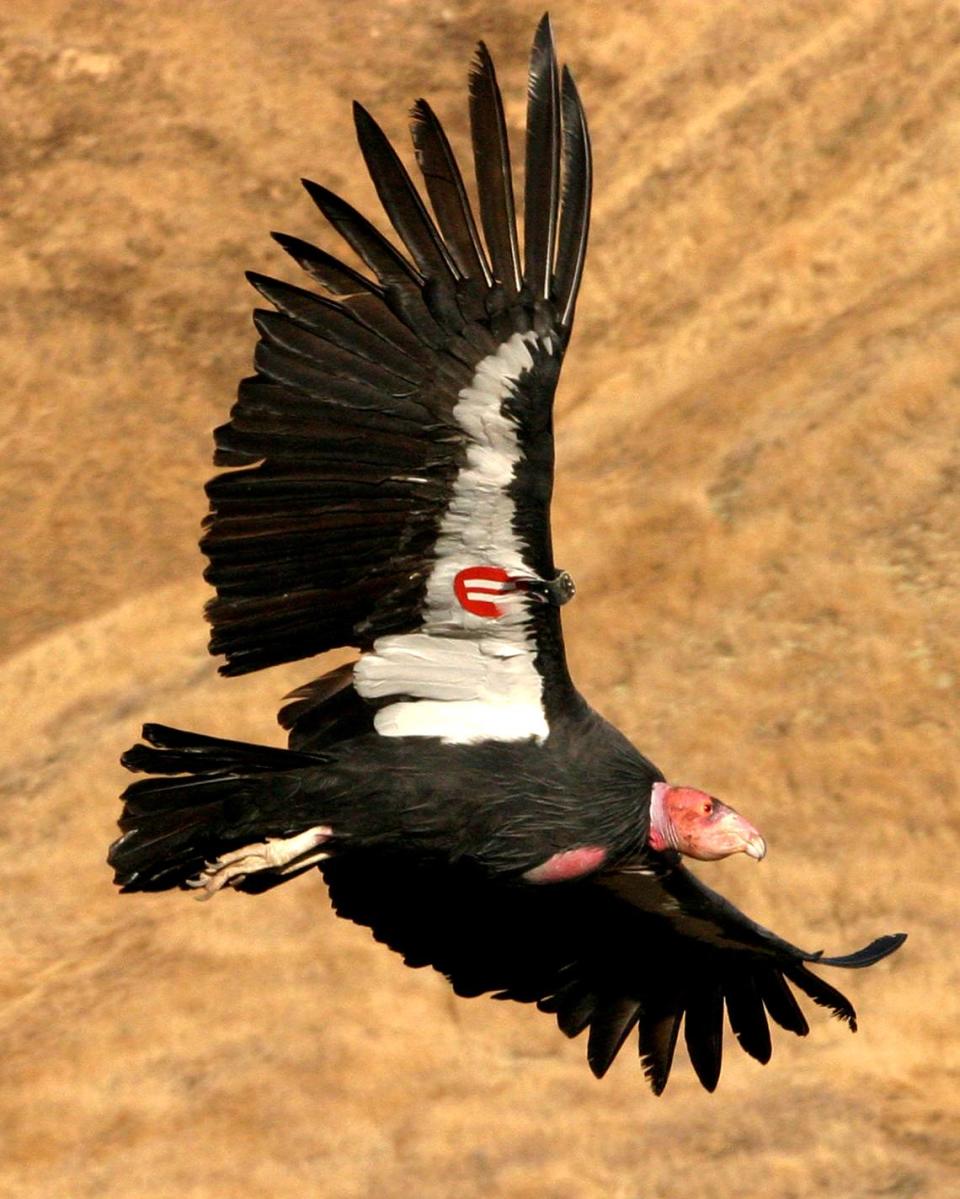Central California condors threatened by deadly disease. What’s being done to protect them?
The deadly threat of avian flu lurks on the horizon for all bird species — including the critically endangered California condors.
Will the 91 condors flying free in Central California elude the highly pathogenic avian influenza (HPAI) that has killed millions of wild and domestic birds, including 21 condors in Arizona and Utah?
How vulnerable are the condors in San Simeon, Big Sur and Pinnacles? And what’s being done to protect the enormous, critically endangered birds?
Is there a California condor vaccine?
Ventana Wildlife Society executive director Kelly Sorenson said the recent outbreak in Arizona “appears to have elevated the sense of urgency” to develop a vaccine for the condors, carrion eaters with majestic 9 ½-foot wingspans that escaped near extinction 40 years ago.
In an ideal situation, condors would be captured one by one and vaccinated to protect against a possible biological catastrophe.
However, an effective vaccine for these birds is still in the early stages of development. No date has been set for a vaccine trial on condors.
Joanna Gilkeson, with the U.S. Fish & Wildlife Service, said her group is working with the U.S. Department of Agriculture’s Animal and Plant Health Inspection Service (APHIS) to “finalize details of a vaccine trial for California condors.”
APHIS is responsible for “announcing when the trials begin,” Gilkeson explained in an email.
“At this time APHIS and FWS…are exploring the logistics and use of a vaccine in that population (of condors),” Tanya Espinosa, public affairs specialist with APHIS, wrote in an email.

Condor quarantine pens
Ventana Wildlife Society has ordered 10 large quarantine pens, which will arrive in panels and be installed this week. They cost $85,000, money that was provided via a fundraising campaign.
The pens measure 12 feet wide, 12 feet deep and 8 feet high, and are made with 6-gauge
galvanized welded wire mesh and 16-gauge galvanized steel tubing.
“These pens will most likely be used for the treatment” of infected birds, Sorenson explained. The pens will allow for infected condors to receive “supportive care in an environment that is removed from zoos, domestic poultry and the free-flying condor population.”
Sorenson holds out hope that the large pens “will also be useful for vaccinating the flock,” she said, rather than just treating sick birds.
Reevaluating condor feeding sites
California condors, known to scientists as Gymnogyps californianus, frequently eat at communal feeding sites.
Local dairies provide stillborn calves so condors, especially juveniles, can be assured of lead-free nutrition.
Such congregate feeding sites carry an increased risk, as they attract more birds than just condors.
Turkey vultures are known to have a high incidence rate for HPAI, and often dine alongside condors.
Since avian influenza spreads through airborne transmission from infected birds — and secondarily through contact with mucus, feces and saliva — feeding sites present an elevated risk to condors.
VWS may eventually stop feeding at all sites, Sorenson said.
This drastic measure would be put into place “should an outbreak (of HPAI) occur in California,” she said.
Shutting down the feeding sites could put condors in harm’s way because the birds would then be obliged to search for carrion, which could contain lead fragments and poison them.
“If we did stop feeding,” Sorenson said, it would be during migration season when turkey vultures are in higher numbers.
“We may temporarily stop feeding at the San Simeon release site until after the fall migration, when the next cohort of captive-bred juveniles will be released into the wild, since there are more turkey vultures seen at San Simeon than Big Sur.”
When it comes to preventing HPAI, “Condors are stuck between a rock and a hard place,” Sorenson said.
To make a contribution to the campaign to protect the 91 free- flying condors in the Central California flock, visit ventanaws.org/donatetocondcorrecovery.html.

